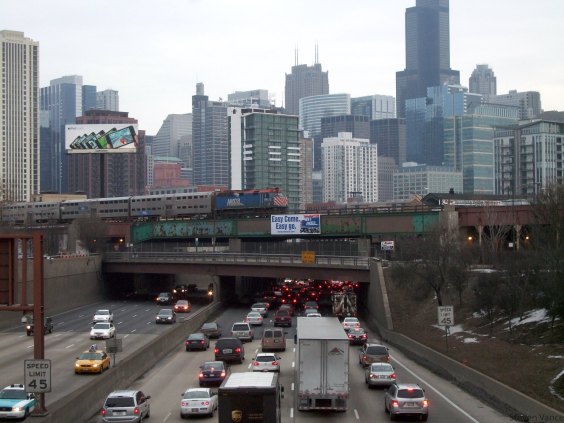
The California Transportation Commission (CTC) is seeking input on revised guidelines for the Active Transportation Program (ATP). The ATP is the main source of state funding for bicycle and pedestrian projects, mostly through federal transportation grants to local cities. The proposed changes to the ATP guidelines are mostly minor, but include eliminating the requirement for matching funds and de-emphasizing bike plans.
ATP is a very new program. Its first funding round was just completed in November, so it's too early to judge the on-the-ground success of any of the projects it's funded. Nevertheless, the second funding cycle will commence in the spring. CTC staff has proposed changes to program guidelines [PDF] and invited potential applicants and interested parties to weigh in. Although the changes are not extensive, they were the subject of three hours of detailed discussion at CTC's workshop last Monday in Sacramento.
The CTC plans to revise the guidelines based on comments from this workshop and a second one, which will be held from 1 to 4 p.m. on January 8 at the Southern California Association of Governments (SCAG) offices, on the 12th floor of 818 West 7th Street, in downtown Los Angeles.
The guidelines are scheduled for adoption by the CTC in March, and the Round Two call for projects would then go out immediately, with applications expected to be due in June.
Caltrans plans to offer workshops in March to go over program requirements, answer questions, and train applicants on the new benefit/cost model it has developed for the application process. Check the Caltrans website for updates.
After the jump are a few highlights from last week's discussion.
- In its first cycle, the ATP funded 220 projects that will benefit disadvantaged communities, and 149 projects and programs under Safe Routes to Schools.
- Demand for the funds are high, and the program is likely to become even more competitive over time as people get better at the application process.
- Although several people requested more time to complete applications, CTC staff said that would be difficult. The program is new, and on an accelerated pace. There is no sunset date for the program, which is intended to be ongoing, so late applicants should be able to apply for future funding cycles. After the 2015 cycle, there should be a new round of funding available every two years, starting in 2017.
- The new guidelines eliminate most bike plans from eligibility, as one of the goals of the program is to get projects on the ground as soon as possible. Some limited funds are available for comprehensive, community-wide bike plans, but only for communities that clearly need the funding assistance to complete them.
- All new projects must be consistent with the program's goals, which are to increase the number of people walking and bicycling. The emphasis is on basic projects, not elaborate parks or beautification.
- In the second funding cycle, for which applications will be due sometime around June 1, 2015, California Transportation Commission staff will administer the application process, taking over some duties from Caltrans.
- Several participants asked questions about the evaluation process, including the expertise and training of those evaluating the applications. CTC staff emphasized their plan to have the process be as interactive among evaluators as possible. This topic will be further discussed at the next workshop.
- The definition of what constitutes a disadvantaged community may need refinement. Currently, the program allows applicants to use one of four ways to gain points in this category, which helps the ATP meet its regulatory requirement of awarding at least 25% of its funds to benefit disadvantaged communities. The fourth method, which can be defined by the applicants themselves, was lauded by small rural areas that do not have the same access to data as larger areas and therefore cannot qualify in one of the other ways. It was also called out for needed clarification and consistency, so that applicants are not awarded points for claims based on measures that can be manipulated to make them fit the criteria.
- The discussion of the criteria of disadvantaged communities was way more complex than that last paragraph can convey, but in the end almost all the projects funded under the ATP qualified as serving a disadvantaged community. This raises the question of whether there is too much emphasis on this criteria, or if the criteria is too easily met.
Caltrans staff is looking for feedback on the draft application [PDF] for the second round of funding. They are looking for input on how to make the application process work better, especially in three areas that were not well represented in the first round of allocations: recreational trails, non-infrastructure projects, and plans. Send comments to Active Transportation Program Manager Teresa McWilliam.





